The review into the End of Life Choice Act was released [recently] and we think it is important to provide a detailed summary of the contents, in particular some of the points of concern.
Let’s start with some statistics. The Ministry of Health states that between 7 November 2021 and 30 September 2024, there were 2,482 applications for euthanasia… of which 978 resulted in an assisted death.
As you can see from the graph below the amount of assisted deaths has grown year on year.
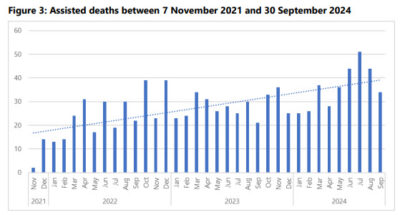
In terms of who has applied to be euthanised, here’s the breakdown. As you can see below, it is basically a 50:50 split between males and females. Interestingly 50 people aged between 18 and 44 applied to be euthanised. And it is sad to see that nearly one in every four applicants had not yet received palliative care before wanting to end their life.
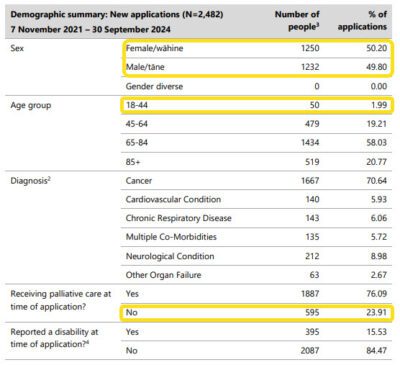
In terms of ethnicity… nearly 80 per cent of applicants were New Zealand European.
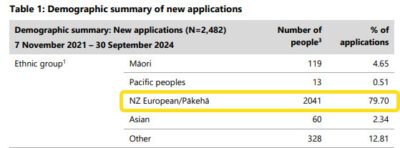
And for those who applied and did not end up receiving euthanasia:
– 635 (25.6%) people died of their terminal illness/underlying condition during the process or before their scheduled assisted death.
– 494 (19.9%) were found to be ineligible and their application did not progress.
– 166 (6.7%) people lost competence during the process.
– 123 (5%) people chose not to proceed and rescinded their application.
The review mentioned that one potential breach of the act had been referred to police to be investigated but gave no further information.
I will now highlight some recommendations in the review which are of concern but remember these are only recommendations at this stage.
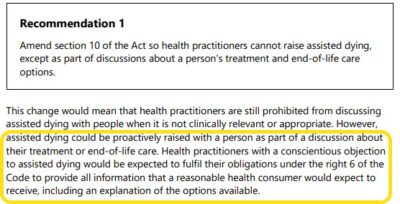
Medical professionals who have so far distanced themselves from the process of euthanasia would be expected to provide all information that a reasonable health consumer would expect to receive, including an explanation of the options available.
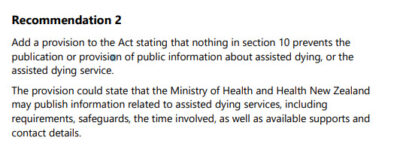
The Ministry of Health and Health New Zealand may advertise euthanasia by providing information related to assisted dying services and contact details.
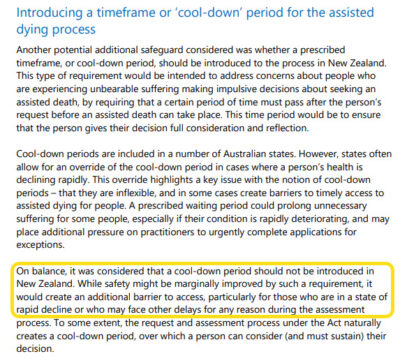
Requests for ‘cool down’ periods to safeguard against people in pain making impulsive decisions was rejected, despite it stating in the report that the requirement might improve safety.
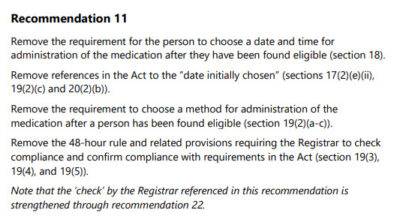
Timeframes around when the assisted death takes place should be removed so the timing can be more flexible and immediate if chosen.
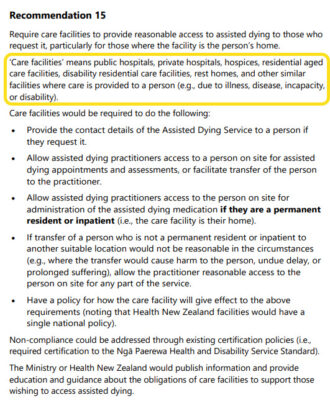
Care facilities including the likes of hospices, rest homes and even disability care providers must provide access to assisted dying.
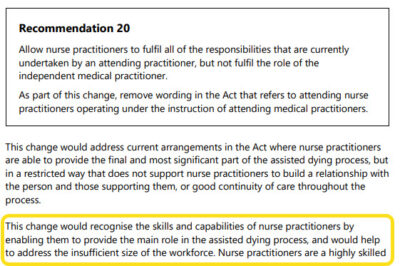
Allow nurses to provide the main role in the euthanasia process and remove wording which states “they must work under the instruction of a medical practitioner”. All this because there are not enough medical professionals who are willing to do it especially in rural areas.
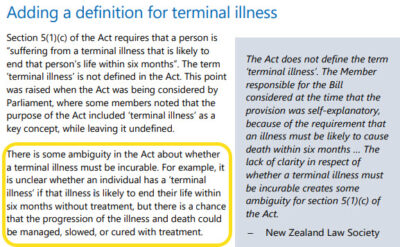
Also mentioned in the review is that the term ‘terminal illness’ is not defined in the act… and is causing some ambiguity about whether a terminal illness must be incurable. For example, it is unclear whether an individual has a ‘terminal illness’ if that illness is likely to end their life within six months without treatment, but there is a chance that the progression of the illness and death could be managed, slowed, or cured with treatment.
One last point of interest, the silence around the release of this report is astonishing. It seems that the mainstream media has turned a blind eye to the fact it is available and the ministry just quietly put it on its website.
Family First will continue to bring you the stories which matter and please feel free to contact us should you find some news you think we would be interested in.
This article was originally published by Family First New Zealand.









